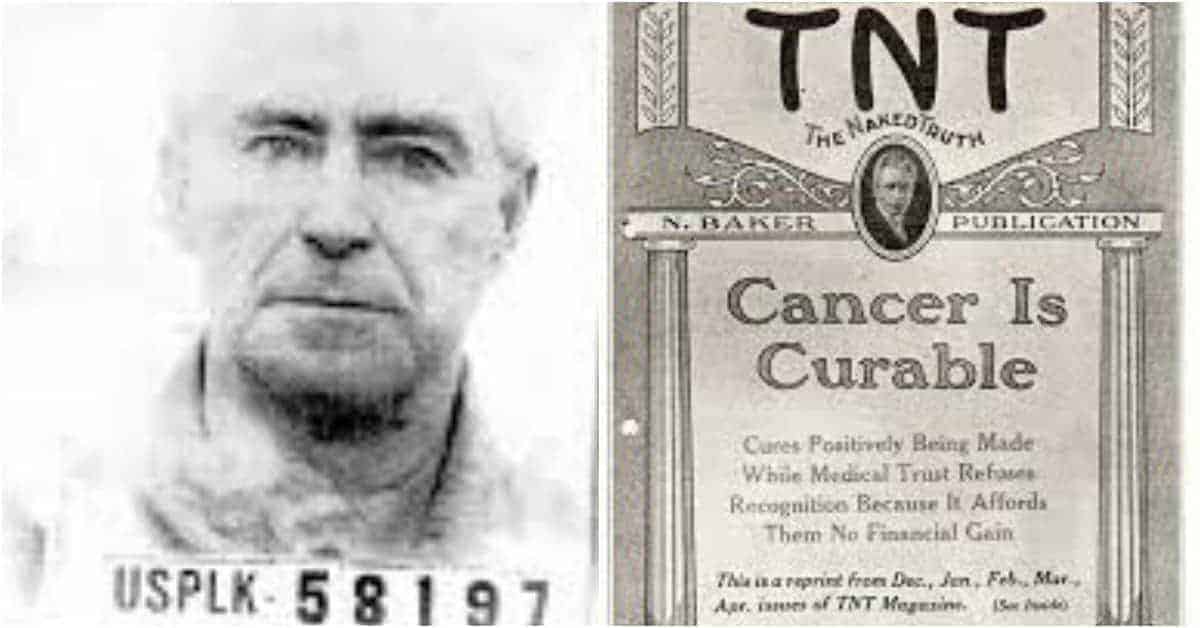Norman Baker was an entrepreneur, an inventor, and later a radio broadcaster. He was a flamboyant character who always dressed in a white suit with a lavender tie. He excelled in the art of self-promotion through his radio show and by his self-financed biography, “Doctor, Dynamiters, and Gunmen.” Its author, Alvin Winston, wrote that Norman Baker’s life story was “the greatest one-man battle ever fought,” and that his biography was the “most important book ever written.” This is the story of Norman Baker, the man who claimed to have a cure for cancer.
Norman Baker was born on November 27, 1882, in Muscatine, Iowa. Baker was the youngest of ten children. His father, John Baker owned the Baker Manufacturing Company in Muscatine and also reportedly had 126 patents to his name. Norman’s mother Frances worked as a writer before she got married. Norman left school at the age of sixteen and began working as a machinist. He worked as a die and toolmaker, traveling from town to town in search of work.
His path took a different direction however after he watched a “mental suggestion” performance by “Professor Flint.” Baker was so inspired that he set out to produce his own version of the show. After an initially slow start, Baker’s show took off and became a hit on the vaudeville circuit. Baker’s show featured a mind reader known as Madame Pearl Tangley. When the original star of the show quit, she was replaced by Theresa Pinder, and a year later she became Norman’s wife.

The show successfully ran for four years before Baker’s career took another divergent path. While working on a new invention in his brother’s machine shop, Norman invented a calliope which used air rather than steam to operate. He called it the Air Calliaphone and sold it for $500. He made two more and sold them. In 1915 he decided to quit the vaudeville circuit to begin full-time manufacturing of his new invention.
He divorced his wife Theresa the same year. His manufacturing business became very successful and at its height was reported to be making $200,000 a year. In 1920 Baker set up an art correspondence school known as the Tangley School. Despite confessing to having no artistic ability himself, Baker managed to earn $75,000 teaching others. Again in 1925, Baker changed his career once more. He met with the Muscatine Chamber of Commerce and offered to build a radio station to “popularise Muscatine throughout the world.” Baker promised to use his radio show to promote Muscatine as an investment opportunity for businesses and his request was granted.

